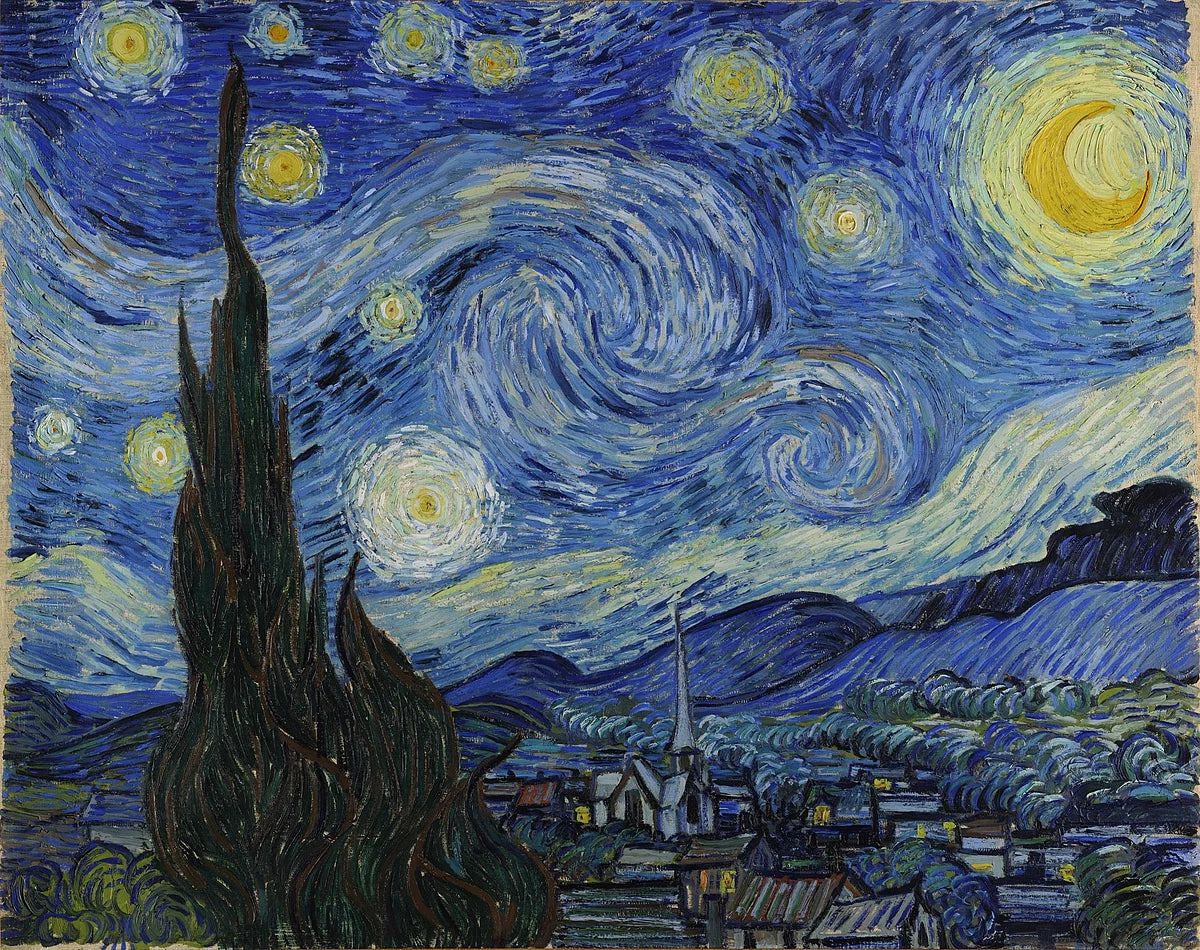
The Starry Night, 1889
Vincent van Gogh’s "The Starry Night" is one of the most iconic and celebrated paintings in art history. Completed in 1889 during his stay at the Saint-Paul-de-Mausole asylum in Saint-Rémy-de-Provence, this work is a vibrant depiction of a swirling night sky over a quiet village, showcasing van Gogh’s unique artistic vision and emotional depth.
The painting portrays a dynamic, almost dreamlike night scene, with a sky filled with whirling clouds, bright stars, and a radiant crescent moon. Van Gogh’s distinctive use of thick, swirling brushstrokes gives the sky an intense sense of movement and energy, as if the heavens themselves are alive. The deep blues and vibrant yellows create a striking contrast, giving the painting its famous, mesmerizing glow.
The village below, by contrast, is calm and serene. Its dark, pointed rooftops and the cypress tree that extends into the sky ground the scene in reality, providing a stark juxtaposition to the chaos above. The church’s spire points upward, symbolizing a connection between the earthly and the divine, while the cypress tree, often associated with mourning and eternity, could reflect van Gogh’s contemplation of life and death during his time in the asylum.
Though many believe "The Starry Night" reflects van Gogh’s view from his window at the asylum, the scene is largely imagined. The village does not match Saint-Rémy, and the swirling sky, with its exaggerated forms, suggests an inner, emotional landscape rather than a literal one. Van Gogh’s letters to his brother, Theo, reveal his fascination with the stars and the night sky, where he found a sense of comfort and infinite possibilities.
Created during a time of personal turmoil, "The Starry Night" captures van Gogh’s complex emotional state, blending melancholy with awe and wonder. The artist himself was uncertain about the painting’s value, writing to Theo, "This morning I saw the countryside from my window a long time before sunrise with nothing but the morning star, which looked very big. But the picture is one of the failures.”
Despite van Gogh’s initial doubts, "The Starry Night" has come to represent not only his unique style but also his ability to convey the depth of human emotion through art. Its swirling energy and luminous beauty continue to captivate audiences, offering a glimpse into the mind of an artist who saw the world in ways no one else could. Today, it stands as a testament to van Gogh’s enduring genius and his unparalleled ability to evoke emotion through color, texture, and form.
In essence, "The Starry Night" is a celebration of the mysteries of the universe, an ode to the beauty of the night, and a deeply personal reflection on the artist’s inner struggles and aspirations. It remains a timeless masterpiece that continues to inspire and move art lovers around the world.
